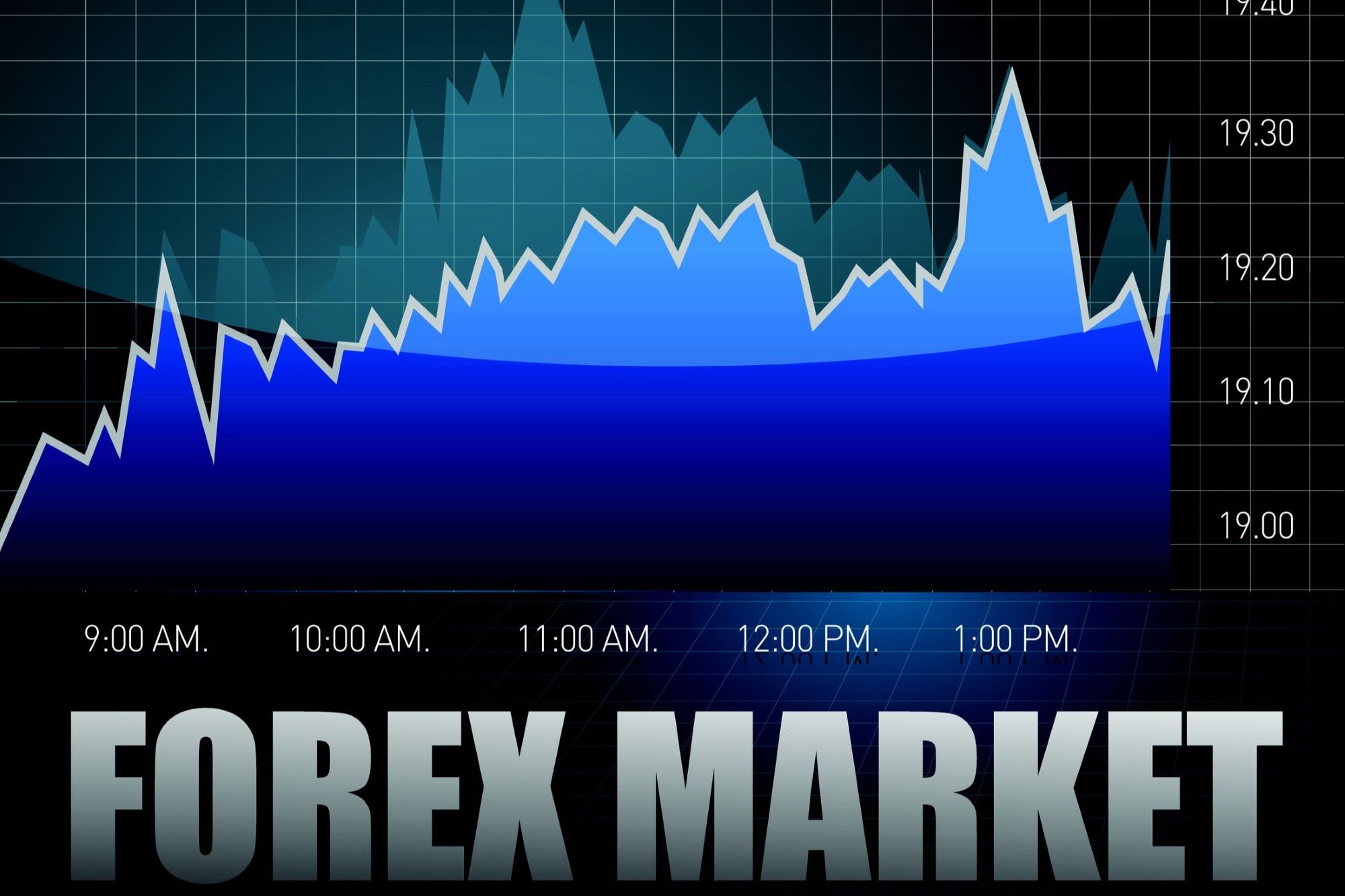When you’re diving into the world of Forex trading, one concept you can’t ignore is market depth. It’s like having a backstage pass to the live concert of currency trading, letting you see what’s happening behind the scenes. But why is it so important? Understanding market depth gives you insights into the supply and demand dynamics of currency pairs, helping you make informed trading decisions.
How Market Depth Affects Trading
Influence on Price Movements
The depth of the market significantly influences price movements in Forex trading. When there are a substantial number of buy orders at a specific price level, it creates upward pressure on prices. Traders tend to respond to this situation by adjusting their selling prices higher, anticipating that the strong demand will drive prices up further. For instance, if there are numerous large buy orders clustered around a price level of 1.1000 for the EUR/USD currency pair, this indicates that many traders are willing to purchase at this price. As a result, sellers may increase their asking prices, creating upward momentum. This interaction between buy orders and sell orders is crucial, as it reflects the current market sentiment and potential future price trends.
Liquidity Considerations
Liquidity refers to the ease with which a trader can buy or sell a currency without causing a significant impact on its price. A deeper market often indicates higher liquidity, which is essential for smooth trading operations. High liquidity allows traders to enter and exit positions quickly, minimizing the risk of slippage—the difference between the expected price of a trade and the actual price. For instance, in a highly liquid market, such as the major currency pairs in Forex, large orders can be executed without drastically affecting the market price. This environment fosters a more predictable trading experience, where traders can effectively manage their risks and make swift decisions based on market conditions.
On the flip side, low liquidity can create significant challenges for traders, especially during volatile market conditions. If there aren’t enough orders to match the buying or selling pressure, even small trades can lead to large price swings. For example, if a trader attempts to sell a large position in a thinly traded currency pair, they might find that their sell orders push the price down substantially, resulting in unfavorable execution prices. Therefore, it’s crucial for traders to assess market depth to gauge liquidity levels. Understanding when liquidity is thin—such as during off-market hours or during significant economic announcements—can help traders avoid executing trades that could lead to unexpected losses.
Spread Analysis
The spread is the difference between the bid (buy) price and the ask (sell) price of a currency pair. Analyzing market depth helps traders understand whether the spread is widening or narrowing, which can provide valuable insights into market volatility and trading costs. In a liquid market with high depth, the spread tends to be narrow, meaning traders can enter and exit positions with minimal costs. For instance, if the bid price for EUR/USD is 1.1000 and the ask price is 1.1002, the spread is just 2 pips, indicating a highly liquid market where trading costs are low. This is particularly advantageous for scalpers and day traders who rely on quick, small price movements to make profits.
In contrast, when market depth is low or during periods of high volatility, the spread may widen significantly. This widening can signal uncertainty among traders, as they may be hesitant to execute trades due to the perceived risk. For example, during major economic news releases, the spread can increase from 2 pips to 10 pips or more, reflecting a decrease in liquidity and increased market risk. Traders need to be aware of these changes in spread, as they can impact overall profitability. A widening spread can eat into profits, especially for short-term trading strategies, making it vital for traders to monitor market depth and spread dynamics closely.
Tools for Analyzing Market Depth
Trading Platforms with Depth Analysis Features
Most modern trading platforms, like MetaTrader 4 and MetaTrader 5, come equipped with robust tools for analyzing market depth. These platforms have become popular among traders due to their user-friendly interfaces and comprehensive features that cater to both novice and experienced traders. One of the key aspects of these platforms is their built-in market depth analysis tools, which provide visual representations of the current state of the market. This visual data allows traders to digest complex information quickly, making it easier to make informed trading decisions.
Here are some essential features of trading platforms with depth analysis tools:
- Real-Time Data: Platforms like MetaTrader 4 and 5 provide real-time data on market depth, allowing traders to see the latest buy and sell orders without delay. This immediacy is crucial for traders looking to capitalize on short-term price movements.
- Visual Representations: The visual representation of market depth, often shown as a ladder or histogram, allows traders to quickly assess the volume of buy and sell orders at various price levels. This helps in identifying potential support and resistance levels.
- Customizable Settings: Traders can often customize the depth of market settings, allowing them to filter data based on their specific needs. For example, they might choose to focus only on certain currency pairs or adjust the display of order sizes.
- User-Friendly Interface: These platforms are designed with usability in mind, featuring intuitive layouts that make it easier for traders to navigate through various data points and tools.
- Integrated Trading Features: Many platforms combine market depth analysis with other trading tools, such as technical indicators and charting capabilities, creating a comprehensive trading environment that caters to multiple trading strategies.
By utilizing these platforms, traders can gain insights into market dynamics that are critical for successful trading.
Market Depth Charts
Market depth charts are invaluable tools that visually display the order book, offering a clear picture of the buy and sell orders at different price levels. These charts make it easier for traders to spot trends and identify critical price levels where significant buying or selling is taking place. By interpreting these charts, traders can make more informed decisions about their entries and exits in the market.
Here are some key aspects of market depth charts:
- Order Book Visualization: Market depth charts provide a graphical representation of the order book, displaying the number of buy and sell orders at various price points. This visualization allows traders to quickly gauge where the majority of orders are placed.
- Identification of Support and Resistance Levels: By observing where large clusters of buy or sell orders are located on the chart, traders can identify potential support and resistance levels. For example, a significant number of buy orders at a particular price may indicate strong support, while a large volume of sell orders may indicate resistance.
- Trend Analysis: Traders can analyze market depth charts to spot trends in buying and selling activity. For instance, if there is a consistent increase in buy orders over time, it may signal a bullish trend, prompting traders to consider long positions.
- Real-Time Updates: Many market depth charts offer real-time updates, allowing traders to adjust their strategies based on the most current market conditions. This feature is particularly useful during periods of high volatility when market dynamics can change rapidly.
- Integration with Other Tools: Market depth charts can often be integrated with other analytical tools, such as technical indicators and trading signals, providing a holistic view of market conditions.
By leveraging market depth charts, traders can enhance their analysis and improve their overall trading strategies.
Order Flow Analysis Tools
Order flow analysis tools, such as Footprint Charts, provide traders with a detailed view of the actual volume of trades executed at different price levels. These tools go beyond traditional price charts by displaying not just the price movements, but also the underlying buying and selling activity. This allows traders to gain deeper insights into market activity and make more informed decisions based on the flow of orders.
Key features of order flow analysis tools include:
- Volume Insights: Order flow analysis tools display the actual volume of trades at various price levels, helping traders understand where the most significant buying and selling activity is occurring. This information is crucial for gauging market sentiment.
- Understanding Market Sentiment: By analyzing the volume of orders at different price levels, traders can better understand whether buyers or sellers are in control of the market. A high volume of buy orders at a particular price may indicate bullish sentiment, while high selling volume might suggest bearish sentiment.
- Identifying Reversals: Order flow analysis can help traders identify potential market reversals. If the buying volume significantly increases after a price drop, it may signal a reversal, prompting traders to consider entering a long position.
- Detailed Price Action Analysis: These tools allow traders to analyze price action in greater detail, as they show how many contracts were traded at specific price points. This granularity can help in spotting key levels of support and resistance based on real trading activity.
- Integration with Other Trading Strategies: Order flow analysis tools can be used in conjunction with other technical analysis methods, creating a more comprehensive trading strategy. For instance, traders can combine order flow insights with technical indicators to enhance their decision-making process.
By utilizing order flow analysis tools, traders can gain a competitive edge in understanding market dynamics, ultimately improving their trading performance.
Reading Market Depth Data
Interpreting Bid and Ask Sizes
When analyzing market depth, one of the primary factors to consider is the size of bid and ask orders. The bid size represents the number of contracts or units that buyers are willing to purchase at a specified price, while the ask size indicates how many contracts sellers are willing to sell at a given price. Observing these sizes can provide insights into market sentiment. For instance, if you notice a significantly larger bid size compared to the ask size at a particular price level, it may suggest strong buying interest. This can be an indication that the price is likely to rise, as buyers are eager to enter the market. Conversely, if the ask size is larger, it may signal stronger selling pressure, indicating that the price could drop.
Identifying Support and Resistance
Market depth data can be instrumental in identifying key support and resistance levels. Support refers to price levels at which demand is strong enough to prevent the price from falling further, while resistance is where selling pressure is sufficient to prevent prices from rising. By examining the depth of the market, traders can pinpoint where significant buy and sell orders are concentrated. For example, if you observe a cluster of large buy orders at a specific price point, this indicates a potential support level. Traders can use this information to strategically enter long positions, expecting that the price will bounce back from this support level.
On the flip side, identifying resistance levels through market depth is equally vital. If you see substantial sell orders stacked at a particular price level, it suggests that many traders are willing to sell, potentially capping any upward movement. Recognizing these levels allows traders to set their stop-loss orders more effectively and determine optimal entry points. Moreover, these support and resistance levels can help in making informed decisions about taking profits. By integrating market depth analysis with traditional technical analysis, traders can create a more robust trading strategy that maximizes their chances of success.
| Aspect | Explanation | Impact on Trading |
| Bid Size | Represents the number of units buyers want to purchase at a specific price. | Larger bid sizes indicate strong buying interest; may signal price increases. |
| Ask Size | Indicates how many units sellers are willing to sell at a given price. | Larger ask sizes suggest strong selling pressure; may signal price declines. |
| Support Levels | Identified by large concentrations of buy orders at specific price points. | Helps traders determine entry points for long positions. |
| Resistance Levels | Identified by significant sell orders at specific price levels. | Assists traders in setting stop-loss orders and profit targets. |
Strategies for Using Market Depth
Scalping with Market Depth
Scalping is a trading strategy that involves making numerous quick trades to profit from small price movements. For scalpers, market depth is an invaluable tool that can significantly enhance their trading efficiency. By closely monitoring the depth of the market, scalpers can identify short-term opportunities where they can enter and exit trades rapidly. For instance, when a scalper observes a surge in buy orders at a specific price level, they may choose to enter a long position, anticipating a brief price increase. The ability to see real-time changes in market depth enables scalpers to react swiftly to market fluctuations, maximizing their potential profits from minor price changes.
Moreover, understanding market depth allows scalpers to refine their entry and exit points. By analyzing the bid and ask sizes, they can determine optimal moments to execute their trades, thereby minimizing slippage. Scalpers often set tight stop-loss orders to protect their capital, and market depth analysis can help them avoid areas with low liquidity where their orders might be executed unfavorably. Overall, the integration of market depth analysis into a scalping strategy can provide traders with a competitive edge, enabling them to capitalize on fleeting market opportunities effectively.
Day Trading Techniques
For day traders, the ability to analyze market depth can provide a significant advantage. Day trading requires making quick decisions, often in a fast-paced environment where every second counts. By understanding the buying and selling pressure indicated by market depth, day traders can make informed decisions on when to enter or exit trades. For example, if a day trader notices a sudden increase in bid sizes, it may signal a potential price increase, prompting them to enter a long position before the market moves in their favor. Conversely, if they observe a spike in sell orders, it may be a cue to exit their positions or even short the market.
Additionally, market depth analysis helps day traders gauge overall market sentiment. By monitoring the balance between bids and asks, traders can develop a sense of market direction and strength. If the depth shows consistent buying interest with a growing number of buy orders, it may indicate bullish sentiment, providing a more favorable environment for buying opportunities. Conversely, if the market shows an increase in sell orders, it could indicate bearish sentiment, prompting traders to be more cautious. Thus, integrating market depth analysis into day trading techniques can enhance a trader’s ability to respond to market dynamics quickly and effectively.





